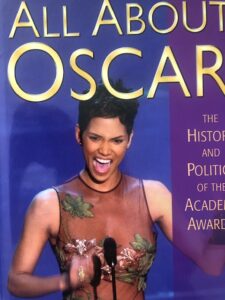Cinematographer on ‘Jaws’, Dies at 101
The Oscar nominee shot the first film ever directed by William Friedkin and replaced Haskell Wexler on ‘The Conversation’ and ‘Cuckoo’s Nest.’

Butler died Wednesday evening in Los Angeles, according to the American Society of Cinematographers. He is survived by five daughters and his wife, Iris.
During his five-decade career, Butler also shot Coppola’s The Rain People (1969) and The Conversation (1974); Peter Hyams’ Capricorn One (1977); Randal Kleiser’s hit musical Grease (1978); and Rocky II (1979), Rocky III (1982) and Rocky IV (1985), all written and directed by and starring Stallone.
Butler also had replaced Wexler on The Conversation after creative differences forced Wexler off that production early on.
Butler also lensed the first film Friedkin ever directed as well as Jack Nicholson’s 1971 helming debut, Drive, He Said; the horror sci-fi Demon Seed (1977); the skating drama Ice Castles (1978); the 1980 musical Can’t Stop the Music; the Ivan Reitman comedy Stripes (1981); and the 1997 scary snake picture Anaconda.
Butler had collaborated with Spielberg on his early 1970s telefilms Something Evil, featuring Sandy Dennis and Darren McGavin, and Savage, starring Martin Landau.
He bumped into the director by happenstance in the Universal Studios parking lot one day and said, “I hear you are making a movie about a fish.”
For Jaws, Butler said his intention was for the early scenes on Amity Island to reflect the style of Andrew Wyeth paintings — regional and realistic — and later contrast them with darker, violent imagery.
“I brought a lot of new things to the picture, such as hand-holding the camera,” Butler noted in Patrick Jankiewicz’s 2015 book, Just When You Thought It Was Safe: A Jaws Companion.
“In the old days of making sea pictures, they used a giant gimbal, which weighs roughly 400 pounds and is slow and hard to set up but does keep the camera level. I found, just by experimenting, that I could hand-hold the camera on an oceangoing boat and keep it level simply by using my knees. I told Steven that I had this idea about shooting the picture hand-held, and he just fainted.”
As second-unit photographer on John Boorman’s Deliverance (1972), Butler shot stunt footage and the opening-title sequence as the camera skims across the river, an experience that heavily influenced his Jaws approach.
Butler recalled how Deliverance cameraman Vilmos Zsigmond filmed the famed rapids sequence, then approached Panavision to construct a waterproof plastic and glass floating box that would enable him to shoot at ocean level for Jaws.
“We were able to dip just slightly into the water to show the audience a scene from the shark’s perspective,” he said in 2005. “The dangling legs of swimmers looked like dinner to the shark. Panavision also provided an underwater camera. It was enormous but very stable underwater and easy to operate.”
Production problems on the set of Jaws became legendary. The movie began without a completed script, the giant mechanical shark malfunctioned, and the planned 55-day shoot ballooned to 159 days with a wildly overblown budget that more than doubled to approach $9 million. Spielberg feared he would be fired at any moment.
“I said to Steve, ‘I’ll tell you something, it’s been a week and we’re still here. You have absolutely nothing to worry about. They must think we’ve got a great project going here or we would be gone, because we’re over further than any picture at Universal has ever gone over!’ “
Despite all the setbacks, Jaws received Oscar nominations for picture, score, editing and sound (eventually winning all but the top award), but Butler’s name went missing from the cinematography category. The summer blockbuster became the highest-grossing film of all time ($470 million) until surpassed by 1977’s Star Wars.
Wilmer Butler was born on April 7, 1921, in Cripple Creek, Colorado, and raised in Mount Pleasant, Iowa. He said his earliest film memory was watching The Jazz Singer (1927) when he was 6.
Years after graduating with a degree in engineering from the University of Iowa, Butler was working as a cameraman doing live shows and commercials for WGN-TV in the early 1960s when he met Friedkin, then a floor manager at the Chicago station.
That day came when Friedkin embarked on a TV documentary about a 32-year-old African-American prisoner on death row. He hired Butler as cinematographer on The People vs. Paul Crump (1962), and the pair worked on the 52-minute project when they weren’t holding down their regular jobs at the station.
“When you see the power a little piece of 16mm film will bring to you, you are inspired to go ahead and pursue a career in the field, and that’s exactly what I did,” Butler said in 1994.






